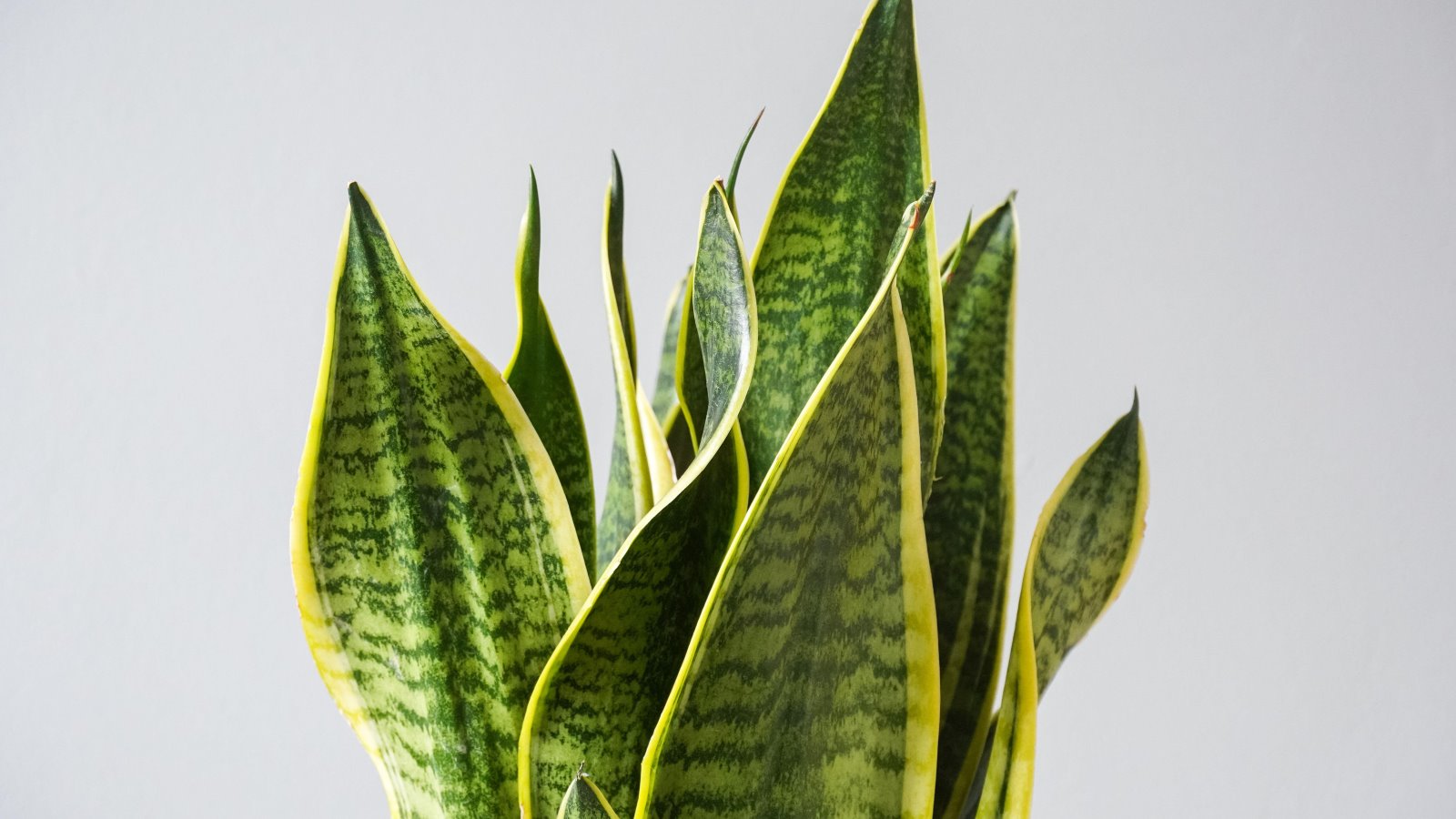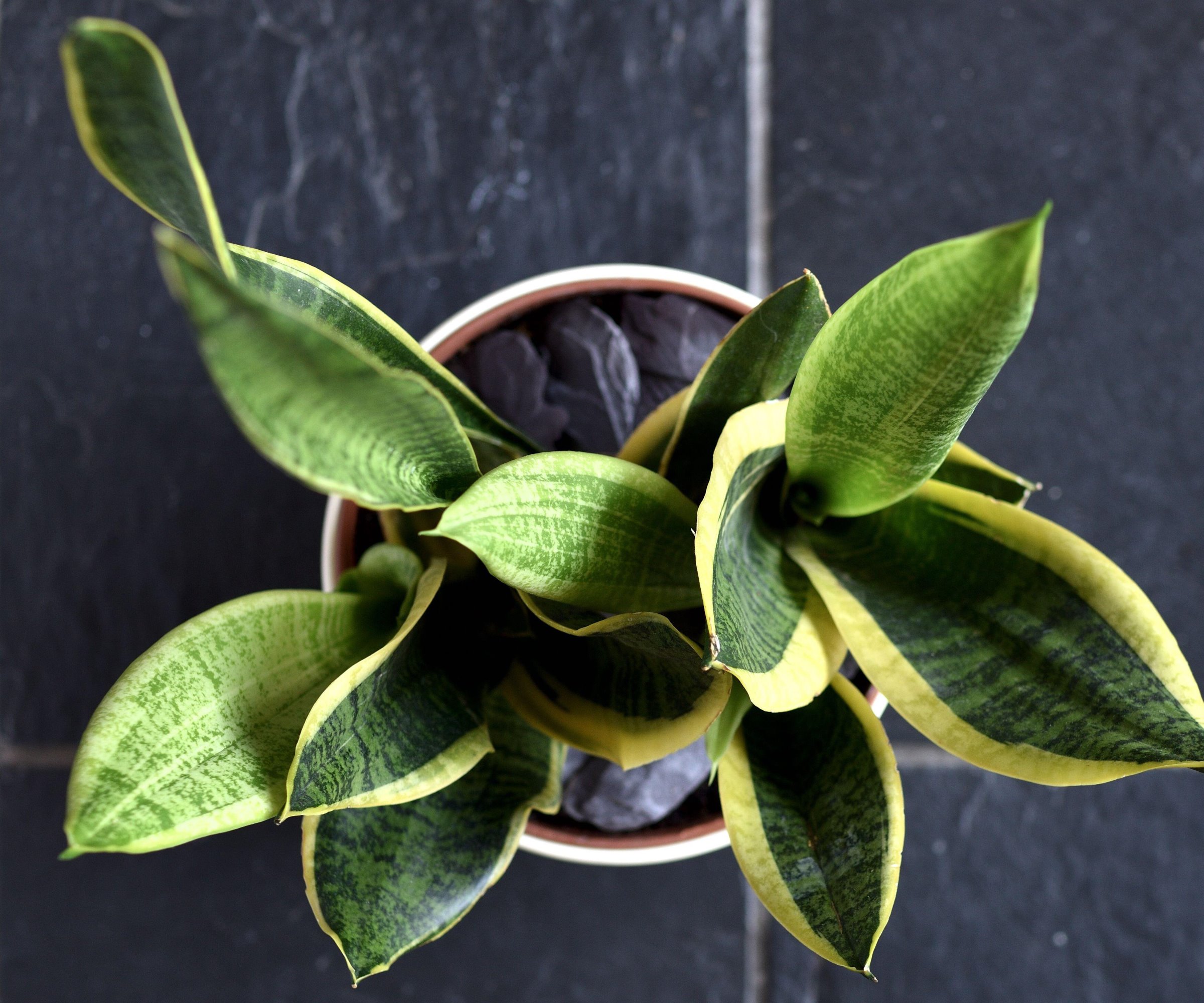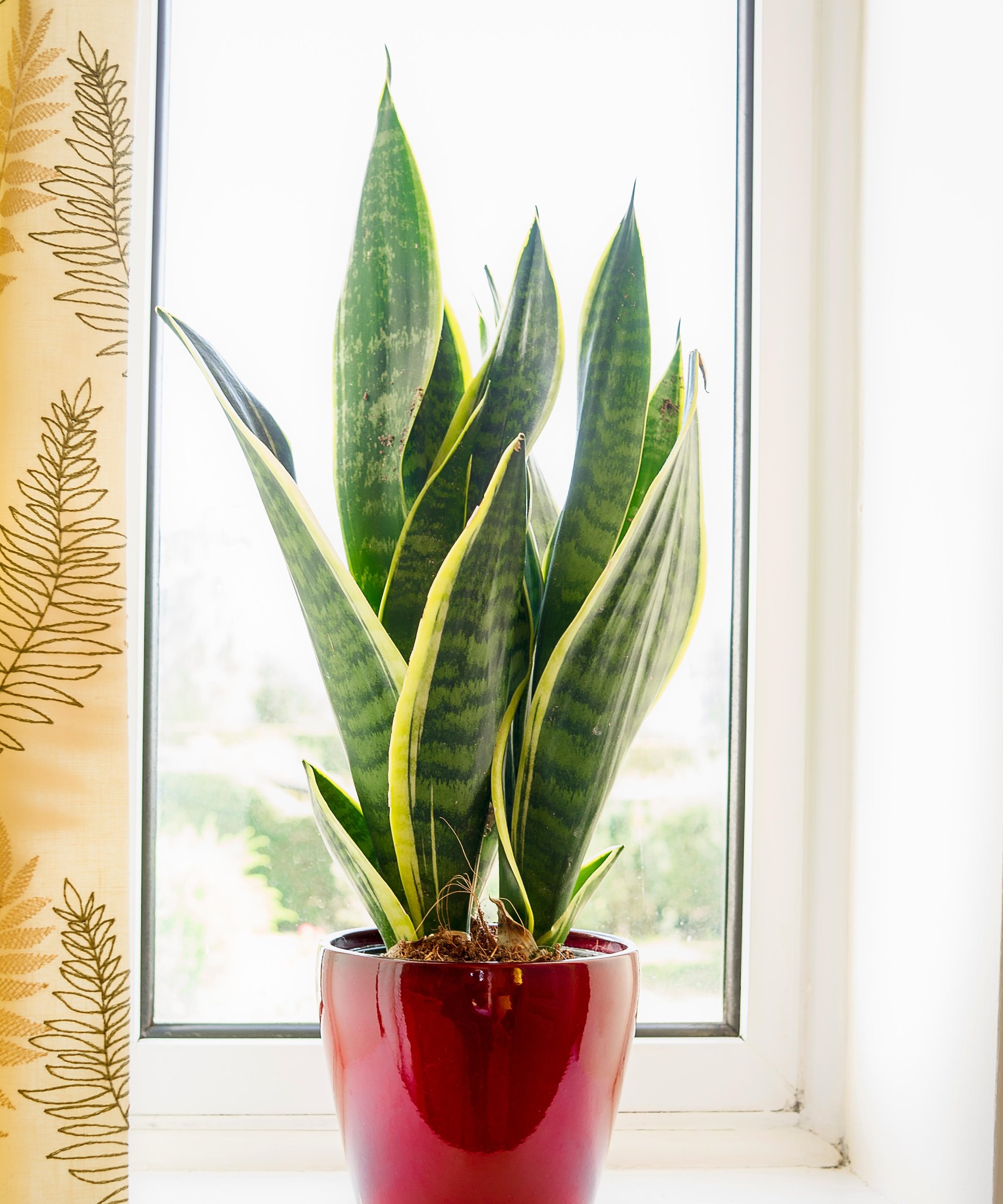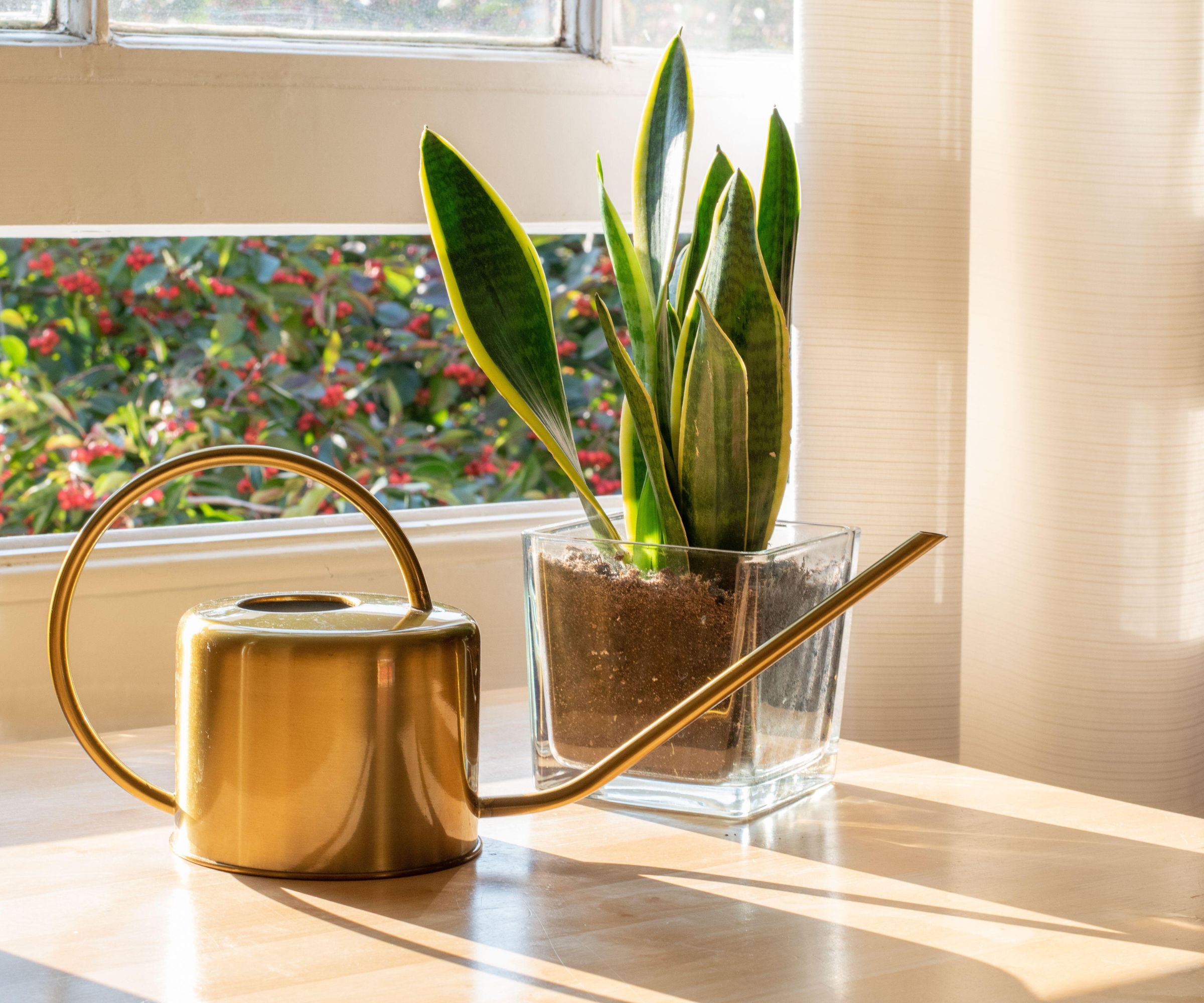How to prune a snake plant – 4 simple steps to healthy houseplants
Knowing how, why and when to prune a snake plant will improve its health and appearance in your home


Snake plants are hugely fashionable houseplants, and their popularity is in part because they are so easy to look after. They are part of the Dracaena genus, and are often referred to as 'mother-in-law’s tongue' and 'sansevieria'. They make one of the best indoor plants for new home gardeners.
These sub-tropical plants can be grown in a bright spot, yet are also happy in lower light levels, and often do not require lots of watering. Snake plants also do not need lots of pruning - just a few of the reasons why they are ideal for beginners.
You may need to prune a snake plant if they are growing too large or show signs of issues, but the amount you need to trim is minimal and it is a very simple process.

Snake plants can thrive in varying light levels
How to prune a snake plant
We hear from houseplant experts about why, when, and how to prune a snake plant to improve its health and appearance. This low light indoor plant is a houseplant known to reduce stress, and pruning one shouldn't be a tricky task to master.

Snake plant leaves have variegated patterns
Why prune a snake plant?
There can be several reasons why these easy indoor plants need a little bit of pruning. While it may not need to be done frequently, pruning can be a great tool in improving the health and look of the plant.
Despite being slow-growing, pruning snake plants will keep their growth under control and make sure they are looking their best. As the plants can ultimately grow several feet tall, pruning keeps them compact and suited for the space they are growing in - this may be key if you have one as a bedroom plant, as snake plants are known as a houseplant to help you sleep better.
If you find that your snake plant is turning yellow, which can happen due to factors such as age, lack of light, or overwatering, then pruning can remove these unsightly leaves and promote new growth. This will help the plant to be more robust and healthier overall, while the new leaves will be more dashing in color than the yellow growth they replace.
Design expertise in your inbox – from inspiring decorating ideas and beautiful celebrity homes to practical gardening advice and shopping round-ups.
You can also prune to propagate a snake plant, as sections can be removed and then propagated in water or soil. This neatens the overall plant, but has the added benefit of giving you more snake plants to enjoy.
If you are looking to add snake plants to your houseplant collection, you can see the wide range of snake plants for sale at Garden Goods Direct.

Snake plants can be kept compact by pruning
When to prune a snake plant?
Snake plants are best pruned during their growing season, which is spring and summer, as they will be able to heal cuts quickly and focus energy into producing new growth.
Nastya Vasylchyshyna, a botany expert for the Plantum app, recommends you may need to only prune ‘every 1-2 years, depending on the plant'.
She adds: ‘There’s no specific timeframe for pruning. If the snake plant grows too large or if you notice dead or damaged leaves, then give it a trim.
‘You can prune during any time of the year, as long as it’s healthy. If you’re afraid of causing damage and want to be on the safe side, prune in spring or early summer during the active growth period.’
While damaged leaves can be removed throughout the year, getting out the tools and cutting in winter could be a pruning mistake that has the potential to stress the plant, and it may take a long time to recover.

Nastya Vasylchyshyna is a professional botany expert for the Plantum app, that helps identify plants and plant diseases and provides care recommendations. Her specialization is plant morphology, phytopathology, and plant physiology.

Snake plants can grow several feet tall
How to prune snake plants
It is important to use clean and sharp tools when pruning a snake plant, such as a pair of pruning shears or knife that has been disinfected with rubbing alcohol, which you can get on Amazon. This will make sure all cuts are clean and there is no risk of disease being transmitted to the plant.
Ash Read, a former gardener and founder of Indoor Plants, highlights a simple four-step plan to help home gardeners prune their snake plants confidently:
- Give your snake plant a good look over to figure out what needs a trim
- Trim any outward-facing leaves at the soil level to manage the width
- If any leaves are reaching for the stars, cut them down a bit
- Keep an eye out for any damaged or off-looking leaves, and snip those away
He adds: ‘Once done, take a step back. Maybe make a few final touches, but remember, don't trim more than a third at once.’
Any pruned leaves can either be put in your green waste or added to the pile to make compost, providing they are free of any signs of fungal diseases. If you were planning on using cuttings to propagate new plants, you'll need healthy and mature leaves for this purpose.

Ash Read is the founder of Indoor Plants. He had a career in professional gardening before turning to writing. Indoor Plants aims to make gardening accessible and enjoyable for all.
FAQs
How big can a snake plant get?
There are lots of different types of snake plants to grow. The height they can reach will be dependent on the species, however the tallest can reach up to 12 feet. Plants are slow-growing and can be easily controlled when grown indoors by pruning, so they often get no taller than two or three feet in height.
As well as being simple to prune and propagate, snake plants are also thankfully simple to water. To water a snake plant correctly, remember that you only want to water when the soil is dry to the touch. A recommended way to check when watering plants in containers is to use your finger to check the moisture levels under the surface. During the winter, it may mean only watering the houseplant once a month.

Drew has worked as a writer since 2008 and was also a professional gardener for many years. As a trained horticulturist, he worked in prestigious historic gardens, including Hanbury Hall and the world-famous Hidcote Manor Garden. He also spent time as a specialist kitchen gardener at Soho Farmhouse and Netherby Hall, where he grew vegetables, fruit, herbs, and cut flowers for restaurants. Drew has written for numerous print and online publications and is an allotment holder and garden blogger. He is shortlisted for the Digital Gardening Writer of the Year at the 2025 Garden Media Guild Awards.